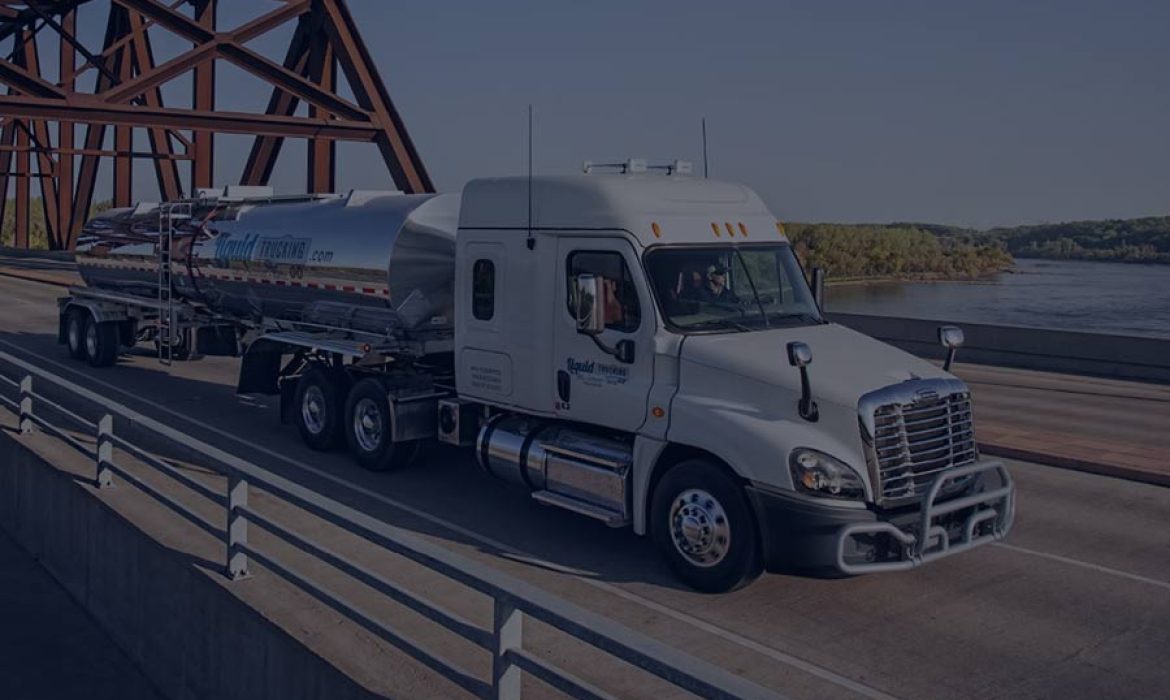Health and Wellness Road Tips for Truck Drivers
As a truck driver, staying healthy on the road can be challenging.
Long hours, sedentary lifestyle, and limited food options can take a toll on your physical and mental well-being. In this article we provide practical health and wellness road tips for truck drivers to help maintain your health and wellness.
Physical Health: Exercise and Nutrition
Staying Active: Incorporate simple exercises into your routine, like stretching, walking, or using resistance bands. These activities can be done during breaks and help in maintaining muscle strength and flexibility.
- Stretching Exercises: Start your day with a series of stretches to improve flexibility and reduce muscle stiffness. Include neck rolls, shoulder shrugs, and wrist stretches.
- Resistance Training: Use resistance bands for strength training. Exercises like band pulls and leg presses can be easily done in limited spaces.
- Cardiovascular Health: Take brisk walks or jogs during breaks. Even a 15-minute walk around a rest stop can significantly boost your heart health.
Healthy Eating: Plan your meals ahead. Packing healthy snacks like fruits, nuts, and yogurt can reduce the temptation of fast food. Opt for salads, grilled items, and water over fried foods and sugary drinks at truck stops.
- Breakfast Ideas: Start with a nutritious breakfast like oatmeal with fruits, or a whole-grain sandwich with lean protein such as turkey or chicken.
- Lunch and Dinner Options: Pack lean protein sources like grilled chicken, fish, or tofu. Combine them with salads or steamed vegetables. For quick meals, consider whole-grain wraps or pita bread with hummus and veggies.
- Snacks: Keep healthy snacks like almonds, carrots with hummus, Greek yogurt, or whole fruits handy.
Mental and Emotional Well-being of Truck Drivers
Managing Loneliness and Stress: Staying in touch with family and friends through calls and messages can alleviate feelings of isolation. Additionally, practices like mindfulness and deep breathing exercises can help manage stress.
- Stay Connected: Use technology to your advantage. Regular video calls with family and friends can reduce feelings of loneliness.
- Mindfulness and Meditation: Practice mindfulness or meditation to manage stress. Even a few minutes of deep breathing exercises can be beneficial.
Quality Rest: Prioritize sleep by creating a restful environment in your truck. Consider using earplugs and eye masks to block out noise and light. Stick to a regular sleep schedule as much as possible.
- Sleep: Maintain a regular sleep schedule. Use comfortable bedding and consider white noise machines or apps to block out disruptive sounds.
- Relaxation Techniques: Before bed, practice relaxation techniques like reading, listening to soothing music, or gentle stretching.
Wellness Tools and Resources
Health Apps: Utilize apps that track fitness, meal planning, and mental health. They can help you stay on track with your health goals.
Support Networks: Join online forums or communities of truck drivers. Sharing experiences and tips with peers can provide valuable support.
Truck Driver Exercise – Workout with your Truck – Video by The Healthy Trucker.
If you are looking for a job here is what is available at Employal.
You May Also Like
How to Get Your First Job As a Truck Driver
3 Steps to Landing Your Ideal Trucking Job
Keep your mental and physical health in shape, stay safe and keep trucking!
Staying Safe on Icy Roads: Trucking Basics Guide
12 Tips To Stay Safe on Winter Roads
Winter brings unique challenges for truck drivers across the USA. Running on icy roads, snowfall, and decreased visibility requires extra caution and preparation. Here’s an overview guide with friendly advice on staying safe on icy roads
Slow Down and Keep Distance
Rule #1:In icy conditions, lower your speed. High speeds are a leading cause of accidents in winter. Even if you’re within the legal limit, it might be too fast for snowy or icy roads. Maintain a safe buffer zone around your truck, avoiding close proximity to other vehicles.
Avoid ‘Packs’ of Traffic
Travel Alone: Traffic often moves in packs. Find a safe way to distance yourself from these groups, aiming to maximize space around your vehicle for safety.
Visibility is Key
Follow Your Judgment, Not Tail Lights: Poor visibility is common in snow. Avoid relying on the tail lights of the vehicle ahead, as this often means you’re too close. Stay parked if you feel unsafe driving in bad weather.
Winter Emergency Kit
Be Prepared: Carry essentials like snow chains, matches, candles, flashlights, warm clothing, road flares, non-perishable food, water, a radio, and backup cell phone chargers. These items can be lifesavers in emergencies.
Routine Truck Inspections
Pre-Trip Checks: Inspect your truck thoroughly before driving. Focus on the engine, brakes, fluids, heater, windshield defroster, mirrors, and tire conditions. Regular inspections can prevent many winter-related issues.
Chaining Practice
Be Chain-Ready: Practice fitting snow chains before you find yourself in a snowy situation. Proper chaining can make a significant difference in traction and overall safety.
Pull Over When Unsure
Safety First: If road conditions seem dangerous, don’t hesitate to pull over. It’s better to reschedule deliveries than to risk an accident.
Maintain Clear Visibility
Regular Cleaning: Ice accumulation on your truck, especially on lights and windshield wipers, can impair visibility. Make frequent stops to clean off the ice.
Layer Up
Dress Warmly: Wearing layers helps maintain body heat in extreme cold. Moisture-wicking materials and heavy cold-weather gear are crucial.
Traction Aids
Kitty Litter or Salt: Carry a bag of non-clay kitty litter or road salt. They provide traction on icy surfaces, helping your truck get moving from slippery spots.
Fuel Treatment
Use Anti-Gel: Diesel fuel can gel in cold temperatures. Use anti-gel additives in your fuel tanks to prevent this, especially when temperatures drop below 20°F.
Extra Washer Fluid
Stay Clean: Keep extra gallons of washer fluid, formulated for cold temperatures, to clear dirty road spray from your windshield.
If you are looking for a job here is what is available at Employal.
You May Also Like
How to Get Your First Job As a Truck Driver
3 Steps to Landing Your Ideal Trucking Job
Keep your mental and physical health in shape, stay safe and keep trucking!
Tips for New Truck Drivers: Landing Your First Truck Driving Job
Welcome to the trucking industry!
Starting your career as a truck driver is an exciting journey. However, landing your first job might seem challenging. Don’t worry, we’ve got you covered with tips for new truck drivers.
Tips for New Truck Drivers
Overview of Industry Requirements
Know the Basics
Understand the necessary qualifications, including obtaining a Commercial Driver’s License (CDL) and any endorsements required for the job you’re interested in.
Research Job Expectations
Explore the types of driving jobs available (local, regional, OTR) and the experience levels they typically require.
Building Your Skills and Qualifications
Enroll in a Reputable Training Program
Invest in a quality CDL training program that provides both classroom education and hands-on experience.
Gain Experience through Apprenticeships or Entry-Level Positions
Consider opportunities with carriers that offer training programs or entry-level positions for new drivers.
Crafting Your Application and Resume
Highlight Relevant Skills and Training
Detail your training, any relevant experience (even non-driving roles), and showcase any certifications or endorsements.
Tailor Your Resume
Customize your resume for each application to align with the specific job requirements and emphasize your strengths.
Networking and Job Search Strategies
Leverage Online Platforms
Explore job boards, industry-specific websites, and social media platforms dedicated to trucking job listings.
Attend Job Fairs and Networking Events
Participate in industry events, job fairs, and meet-ups to network with potential employers and other drivers.
Interview Preparation and Impressions
Research Prospective Companies
Learn about the company you’re applying to and align your motivations with their values and mission.
Prepare for Interviews
Practice common interview questions, focus on safety, reliability, and your willingness to learn and grow as a driver.
Nailing Your First Job
Be Open to Opportunities
Consider starting with a company that may offer lower pay initially but provides valuable experience and training.
Prove Your Worth
Once hired, demonstrate your dedication, reliability, and commitment to safety to lay the foundation for a successful career.
If you are looking for a job here is what is available at Employal.
You May Also Like
How to Get Your First Job As a Truck Driver
3 Steps to Landing Your Ideal Trucking Job
Keep your mental and physical health in shape, stay safe and keep trucking!
Roadside Inspections A Guide for Truck Drivers
For truck drivers in the USA, navigating roadside inspections is a crucial aspect of ensuring safety, regulatory compliance, and maintaining a positive reputation. Roadside inspections, conducted by enforcement officers, are designed to ensure that commercial vehicles and drivers adhere to federal and state regulations. Proper preparation and understanding can help drivers not only pass these inspections but also contribute to a safer road environment.
Importance of Roadside Inspections
Roadside inspections serve multiple purposes:
Safety: The primary goal is to ensure the safety of the driver, the vehicle, and other road users. Inspections help identify potential issues that could lead to accidents.
Regulatory Compliance: Inspections verify compliance with federal and state regulations, including Hours of Service (HOS) rules, weight limits, and vehicle maintenance requirements.
Environmental Protection: Inspections can identify and prevent leaks or spills that could harm the environment.
Public Image: A clean inspection record contributes to a positive reputation for the driver and the carrier, which can attract more business opportunities.
Preparing for Roadside Inspections
Vehicle Maintenance: Regularly inspect and maintain your vehicle. Address any issues promptly, ensuring that lights, brakes, tires, and other essential components are in optimal condition.
Documentation: Keep all necessary documents organized and readily accessible. This includes your Commercial Driver’s License (CDL), Medical Examiner’s Certificate, Hours of Service (HOS) records, and vehicle registration.
Cargo Securement: Ensure that your cargo is properly secured and meets regulations. Unsecured or improperly secured cargo can result in citations.
HOS Compliance: Familiarize yourself with HOS regulations and ensure accurate record-keeping in your logbook or Electronic Logging Device (ELD).
During the Roadside Inspection
Stay Calm: If pulled over for an inspection, remain calm and courteous. Follow the officer’s instructions.
Cooperate: Provide all requested documents and answer questions truthfully.
Be Respectful: Treat the inspection as a professional interaction. Avoid arguing or becoming confrontational.
Know Your Rights: You have the right to report unsafe conditions, request clarification, and understand the inspection process.
After the Inspection
Learn from the Experience: If any violations are found, use them as an opportunity for improvement.
Address Violations: If cited for violations, take corrective action promptly. This may involve paying fines, attending training, or rectifying issues.
Maintain Records: Keep a copy of the inspection report for your records. If no violations are found, this clean inspection record can be valuable.
Conclusion
Roadside inspections are a fundamental aspect of the trucking industry, contributing to road safety and regulatory compliance. By proactively preparing for inspections, cooperating with enforcement officers, and addressing any violations, truck drivers can navigate roadside inspections successfully while upholding their commitment to safe and responsible driving. Remember, a well-prepared and informed driver not only passes inspections but also contributes to a safer and more efficient transportation network.
Here is a link to FMCSA DOT inspections article.
SAMSara article on different levels of DOT roadside inspecitons.
You May Also Like
Posting Your First Job Ad? Here Are Some Tips from the Truck Driver Recruiting Agency
Trucking Job Ad Basics
Are you just starting out your recruiter career? We got you!
Here’s a step-by-step guide on how to structure an effective truck driver job ad to attract high-quality drivers to your fleet.
1. Start with an Engaging Job Title
The job title is the first thing potential candidates see, so it needs to be clear, concise, and appealing. Use terms familiar to drivers, such as “Long Haul Truck Driver,” “CDL Truck Driver,” or “Local Delivery Truck Driver.”
2. Make Your Introduction Compelling
Start your job ad with an engaging introduction about your company and the job. Highlight what makes your company a great place to work. Remember, you’re not just selling a job; you’re selling a lifestyle and a culture.
3. Clearly Define the Role
Include a clear and concise description of the role. List key responsibilities, daily tasks, and the routes they may be driving. Provide information about the type of freight they will handle, the expected hours, and whether overnight trips are necessary.
4. Specify the Requirements
Clearly list the necessary qualifications, such as a valid commercial driver’s license (CDL), a clean driving record, and any physical requirements like the ability to lift a certain weight. Also mention any experience requirements and if specific endorsements are needed, such as HAZMAT or Tanker endorsements.
5. Highlight the Benefits
To make your job ad stand out, be sure to emphasize the benefits your company offers. This can include competitive pay, insurance benefits, retirement plans, paid time off, or bonus pay for safe driving. If your company offers unique benefits, such as flexible schedules, pet-friendly policies, or state-of-the-art equipment, be sure to mention them.
6. Explain the Application Process
Outline the application process so potential candidates know what to expect. Provide information on how to apply, who to contact, and what documentation they need to provide.
7. Use a Call to Action
End your job ad with a strong call to action. Encourage potential drivers to apply and provide a link to the application form or provide contact information for further queries.
8. Proofread and Edit
Finally, ensure your job ad is free from errors and is easy to read. Poor grammar or complicated jargon can turn off potential applicants and give a negative impression of your company.
A well-crafted job ad can make the difference between attracting a flood of qualified applicants or struggling to find the right fit. Follow this guide to create compelling job ads that convey your company’s culture and values and attract the best truck drivers in the industry. Happy hiring!
You May Also Like
Do You Need a CDL to Drive a Box Truck [Guest Post With Truckers Wiki]
Today we answer a question we frequently get. Do you need a CDL to drive a box truck? And what better way to dip into this topic, than to have editorial team of truckers.wiki the trucking Wikipedia guest post.
The question of whether you need a Commercial Driver’s License (CDL) to drive a box truck is a common one in the trucking industry. The answer depends on several factors, including the straight truck’s size and weight, and the nature of the goods being transported.
Learn more about straight (box) trucks here.
Do You Need a CDL to Drive a Box Truck?
Whether you need a CDL to drive a box truck depends on the GVWR of the vehicle.
If the box truck has a GVWR rating of 26,001 pounds or more, a CDL is required. However, if the box truck has a GVWR of less than 26,001 pounds, a CDL is generally not required under federal law. Instead, a regular driver’s license would suffice for operating the vehicle.
However, certain states may have additional requirements, and it’s essential to check local regulations.
Furthermore, if the box truck is used to transport hazardous materials that require placarding, a CDL with a HazMat endorsement would be necessary, regardless of the vehicle’s weight.
Commercial Driver’s License (CDL) Requirement
A CDL is a license that allows drivers to operate large, heavy, or placarded hazardous material vehicles in the United States. According to Federal Motor Carrier Safety Administration (FMCSA) regulations, a CDL is required to operate a vehicle that has a gross vehicle weight rating (GVWR) or gross combination weight rating (GCWR) of 26,001 pounds or more.
Additional Requirements
Even if a CDL isn’t required, professional box truck drivers must still comply with other FMCSA regulations. For example, if the truck is used for commercial purposes — that is, to transport goods for business — the driver must maintain a logbook if they travel more than 150 air miles from their work reporting location.
Health Requirements
Regardless of whether a CDL is required, all drivers of commercial motor vehicles (CMVs) must comply with certain health requirements. For instance, they must pass a DOT physical exam, which certifies that they’re physically fit to operate a commercial vehicle. This examination covers various areas such as vision, hearing, cardiovascular health, and overall physical ability.
Driver Qualifications
A prospective box truck driver must also meet certain driver qualification standards. These typically include having a clean driving record and being at least 21 years old if driving interstate (across state lines). Some states allow intrastate (within a single state) commercial driving at a younger age, but the specifics vary by state.
Experience can also be a crucial factor. Even if a CDL is not required, employers often prefer drivers with prior experience driving similar vehicles. This is because driving a box truck requires skills beyond those needed for regular passenger vehicles, such as maneuvering in tight spaces and handling larger blind spots.
Insurance Considerations
Insurance is another important consideration for box truck drivers. Commercial vehicles generally require commercial auto insurance, which provides coverage for damage or injuries resulting from business-related operations. The required coverage level may be higher for commercial vehicles than for personal vehicles, and premiums are often higher as well.
Furthermore, if a box truck driver is an independent contractor or owner-operator, they may also need to consider cargo insurance, which covers the goods being transported, and liability insurance, which provides coverage if the driver is at fault in an accident.
Conclusion
In conclusion, whether you need a CDL to drive a box truck depends on the GVWR of the truck and the nature of the goods being transported. Health requirements, driver qualifications, and insurance considerations also play a significant role. Understanding these requirements is crucial to ensuring regulatory compliance in the trucking industry.
You’ll need to provide proof of your identity and legal presence in the US, such as a passport or birth certificate. You’ll also need to have a current Medical Examiner’s Certificate, which certifies that you meet the physical qualifications to operate a commercial vehicle.
You May Also Like
DOUBLE TRIPLE ENDORSEMENT: HOW TO GET IT ON YOUR CDL
How To Get Double Triple Endorsement on Your CDL Step By Step
Getting a Double Triple endorsement can be a great addition to your CDL.
It opens a plethora of additional employment opportunities. Including good ol’ dedicated runs that many drivers prefer.
To help you get your Double Triple endorsement we’ve created a step by step list.
Here are some steps you can take to research a trucking company:
Knowledge Tests (Step 1)
Before you can obtain the Double Triple endorsement, you must pass a written test for each endorsement you want to add to your CDL. The knowledge test will assess your understanding of the regulations, safety procedures, and skills needed to operate a double/triple trailer, a tank vehicle, and hazardous materials.
Skills Tests (Step 2)
After passing the written test, you’ll need to pass a skills test that demonstrates your ability to safely operate a commercial vehicle with the additional endorsements. The skills test will typically include a pre-trip inspection, basic control skills, and on-the-road driving.
Costs & Fees of Obtaining Double Triple Endorsement
There may be fees associated with obtaining a Triple Double endorsement, including fees for the written and skills tests, background checks, and security threat assessments. Contact your local DMV for more information on the specific fees in your area.
Documentation Requirements
You’ll need to provide proof of your identity and legal presence in the US, such as a passport or birth certificate. You’ll also need to have a current Medical Examiner’s Certificate, which certifies that you meet the physical qualifications to operate a commercial vehicle.
State Requirements
Endorsement requirements can vary from state to state, so it’s important to check with your local DMV for the specific requirements in your area. Some states may also require additional training, testing, or certifications before granting a Double Triple endorsement.
Hazardous Materials Endorsement (As Addition To Double Triple)
HazMat can be a great addition to your Double-Triple endorsement. Here is a full guide on how to obtain the HazMat.
THE BOTTOM LINE!
Endorsements have a big impact on your trucking career. From a better salary to more home time double triple endorsement is an amazing addition to your CDL.
Happy Job Hunting!
You May Also Like
Keep your mental and physical health in shape, stay safe and keep trucking!
Here is a link to Truckers.Wiki article about T Endorsement (Doubles/Triples) & How To Get It
HOW TO RESEARCH A TRUCKING COMPANY BEFORE YOU ACCEPT AN EMPLOYMENT OPPORTUNITY
IMPORTANCE OF RESEARCHING A COMPANY BEFORE ACCEPTING THEIR JOB PROPOSAL
Researching a trucking company before accepting a truck driver job is an important step to ensure that the company is reputable, safe, and reliable.
As a truck driver recruiting agency we’ve heard a lot of stories and a lot of those were horrific. Companies leaving their drivers stranded, undercutting their earnings with fake load confirmations, taking the truck back few weeks before it’s been paid off; just to name a few…
Doing research on a company you plan to join can make a crucial difference to your future. To ensure you don’t get ripped off and have your intelligence insulted by scammers we’ve made this post.
Here are some steps you can take to research a trucking company:
Check the Company’s Safety Record & Safety Rating
The Federal Motor Carrier Safety Administration (FMCSA) maintains a Safety Measurement System (SMS) database that allows you to search for safety records of trucking companies. You can find this database on the FMCSA website. Check the company’s safety record to see if it has any safety violations or accidents.
You can also check the company’s safety ratings. The FMCSA assigns safety ratings to trucking companies based on their safety performance. A “satisfactory” rating indicates that the company meets the safety standards, while an “unsatisfactory” rating means that the company has serious safety violations.
Read Online Reviews
Look for online reviews of the trucking company. Check out websites like TruckersReport, GoogleMyBusiness listing and GlassDoor to see what current and former employees have to say about the company. You can also check social media platforms like Facebook and Twitter for reviews and comments.
Look for Certifications & Awards
Look for certifications and awards that the trucking company has received. For example, a company that has received a safety certification from the National Safety Council may be a good choice.
Awards from industry organizations and companies can also indicate that the company is reputable and well-regarded.
Employee Turnover
Check the company’s employee turnover rate. High turnover can be a red flag that the company has a poor working environment or doesn’t treat its employees well.
Ask the company for a couple of numbers to get the references. Call their drivers and see how they feel about the company.
Look At Their Equipment
Check the condition of the company’s trucks and equipment. Ask for photos of the equipment from the recruiter or safety, or look for it on the company’s website or social media pages. If possible, ask current or former employees about the condition of the equipment.
Benefits & Compensation
Look into the benefits and compensation packages that the company offers to its employees. Consider factors like pay rates, health insurance, retirement plans, and paid time off. This all goes to show how the company takes care of its own.
THE BOTTOM LINE!
The first two suggestions are a must, but consider doing full research on a company if you are looking for a long-term job. You want to make sure that the company will treat you fair and square.
Happy Job Hunting!
You May Also Like
SLEEP APNEA EFFECT ON TRUCK DRIVERS – IS IT THE UNSEEN DANGER?
IMPORTANCE OF HEALTH IN THE TRUCKING INDUSTRY
Rarely does the trucking industry talk about the health and mental effects this industry has on their most valuable players – truck drivers. So we decided to put out at least one publication a month regarding these issues. We want to help spread this awareness and tackle these issues because drivers safety is always the number 1 concern.
SLEEP APNEA AND IT’S EFFECT ON TRUCK DRIVERS
Today we are going to talk about sleep apnea, it is a disorder characterized by pauses in breathing or shallow breathing during sleep.
It can lead to daytime drowsiness, which can be dangerous for truck drivers who operate heavy vehicles on the road. The Federal Motor Carrier Safety Administration (FMCSA) has issued guidelines for the screening and treatment of sleep apnea for commercial drivers, including truck drivers. Drivers with moderate to severe sleep apnea must be treated and cleared by a medical professional before they can return to driving.
Let’s take a look at those guidelines.
The FMCSA recommends that truck drivers who have symptoms of sleep apnea, such as loud snoring, gasping for air during sleep, and daytime drowsiness, be evaluated by a healthcare professional who is trained in sleep medicine. If a driver is diagnosed with sleep apnea, they must be treated before they can return to driving.
TREATMENT
Treatment options include continuous positive airway pressure (CPAP) therapy, which uses a machine to deliver air pressure through a mask worn during sleep to help keep the airway open, and oral appliances, which reposition the jaw and tongue to help keep the airway open. Drivers who are treated for sleep apnea must also be recertified by a medical professional every year to ensure that the treatment is working and that the driver is able to safely operate a commercial vehicle. The FMCSA also requires that medical examiners (MEs) who conduct the medical examination for commercial driver’s license (CDL) holders to be trained in identifying the signs and symptoms of sleep apnea and to refer drivers who may have the condition for further evaluation. It is important to note that in addition to the FMCSA’s guidelines, individual states may have their own laws and regulations regarding sleep apnea and commercial drivers.
In addition to the treatment and certification requirements for drivers with sleep apnea, the FMCSA also encourages employers of commercial drivers to educate themselves and their employees about the risks of sleep apnea, and to take steps to identify and refer drivers who may have the condition for evaluation. Some trucking companies have implemented screening programs for sleep apnea, and may even provide treatment options for their employees. This not only helps to ensure that their drivers are healthy and fit to drive, but also can be beneficial for the company, as untreated sleep apnea can lead to increased healthcare costs and absenteeism. Also, it is important to note that, Drivers who are treated for sleep apnea and have not had any symptoms after treatment are considered to have a “well-controlled” sleep apnea and are not subject to any restrictions. However, if a driver is not compliant with treatment or continues to have symptoms, they may be subject to a restriction on their CDL, such as a requirement to use a CPAP machine while driving, or a restriction on the type of driving they are allowed to do.
THE BOTTOM LINE!
Overall, sleep apnea is a serious condition that can impact a truck driver’s ability to operate a commercial vehicle safely. It is important for truck drivers, trucking companies, and medical professionals to be aware of the risks and to take appropriate steps to address the issue.
You May Also Like
TANKER ENDORSEMENT: HOW TO GET IT ALL YOU NEED TO KNOW [UPDATED 2023]
ALL YOU NEED TO KNOW ABOUT TANKER ENDORSEMENT and HOW TO OBTAIN IT [Updated 2023
The tanker endorsement is a crucial addition to a CDL that allows drivers to operate vehicles designed to transport liquids or gases. In this blog post, we will discuss when a tanker CDL endorsement is required, its benefits, and the steps needed to obtain it.
When is a tanker CDL endorsement required?
A tanker CDL endorsement (N) is necessary for drivers who operate commercial vehicles designed to carry liquid or gaseous freight in bulk. This includes but is not limited to, fuel and water tankers. As well as vehicles transporting hazardous materials, which may require an additional HAZMAT endorsement (H).
How many gallons require a tanker endorsement?
A tanker endorsement (N) is required when the vehicle’s cargo tank has a capacity of 1,000 gallons or more. Or if the vehicle is transporting multiple smaller tanks, each with a capacity of 119 gallons or more, that totals 1,000 gallons or more.
What Can Be Transported With (N)
Drivers with this endorsement often haul liquid, food-grade materials such as:
- Water.
- Milk.
- Juice.
- Liquid sugar.
- Vegetable oil.
- Vinegar.
To transport hazardous materials, like gasoline or propane, drivers need an additional HazMat endorsement. Dry bulk freight, like plastic and wooden pellets, flour, or grain, does not require a tanker endorsement.
Are Tanker Endorsements and HazMat Endorsements the Same?
Tanker and HazMat endorsements are not the same, although they often overlap in job requirements. Tanker endorsements pertain to the volume being transported, while HazMat endorsements concern the type of material being hauled.
HazMat endorsements enable drivers to transport hazardous materials, such as:
Toxic chemicals. Fuels. Nuclear waste. Flammable liquids and gases. Drivers hauling hazardous materials like gasoline or propane in volumes over 1,000 pounds need both tanker and HazMat endorsements.
A combination endorsement, designated by the letter “X,” covers both tanker and HazMat qualifications. This does not require drivers to transport hazardous materials but provides the option to do so.
Benefits of obtaining a tanker CDL endorsement
There are several benefits, including:
a. Expanded job opportunities: You can access a broader range of job opportunities in the trucking industry. As you will be qualified to transport various types of liquid and gaseous materials.
b. Increased earning potential: You will generally earn a higher salary compared to jobs without the endorsement ie. dry van, reefer or even in some cases flatbed.
c. Enhanced safety and responsibility: It demonstrates a commitment to safety and ensures that you are knowledgeable about handling and transporting hazardous materials safely.
What are the Requirements?
To obtain this endorsement for a CDL, drivers must:
Be at least 18 years old.
Possess a valid U.S. passport or valid residential status.
Hold a valid CDL before applying.
Pass an eye exam and have a photo taken at the DMV.
Pay registration and training fees.
Study enough to pass the knowledge test.
If obtaining a HazMat endorsement or a combination (“X”) endorsement, additional training, certification, and a TSA background check are required.
How to obtain a tanker CDL endorsement
Follow these steps to obtain a tanker CDL endorsement:
1. Hold a valid CDL: Before one can apply for this endorsement, he or she must possess a valid CDL (Class A or B) issued in their state of residence.
2. Study for the test: Drivers need to study the state’s CDL manual to prepare for the tanker endorsement test. The manual covers essential topics such as inspecting and operating tanker vehicles, safe driving techniques, and handling emergencies.
3. Pass the written test: Test consists of 20 multiple-choice questions, with a passing score of 80% or higher required. The test covers topics like tank vehicle inspection, safe driving techniques, and emergency procedures. Just like CDL practice test, keep practicing and you will ace it.
4. Complete a background check (if necessary): If the tanker vehicle will also transport hazardous materials, drivers must obtain a HAZMAT endorsement. This process requires passing a separate written test and a Transportation Security Administration (TSA) background check.
Consequences Of Not Obeying The Law
According to FMCSA Section 383.53, if commercial drivers operating without the necessary endorsement are caught even if the cargo fulfills the regulatory criteria, they may face a penalty of up to $5,000 per incident. As well as license suspension for 90 days.
On top of that, you’re supposed to check your vehicles for leaks since they will not spare you if they find any when inspecting your vehicle at a random stop.
CONCLUSION
Having tanker (N) on your CDL opens up a world of opportunities for commercial drivers. By allowing them to transport liquid or gaseous freight. By understanding when this endorsement is required and following the necessary steps to obtain it, drivers can expand their job prospects and increase their earning potential in the trucking industry. Always remember that safety is paramount when operating a tanker vehicle, and acquiring the proper endorsements demonstrates a commitment to responsible and secure transportation.
You May Also Like
Keep your mental and physical health in shape, stay safe and keep trucking!
If you want to learn more about N endorsement visit Truckers.Wiki article









